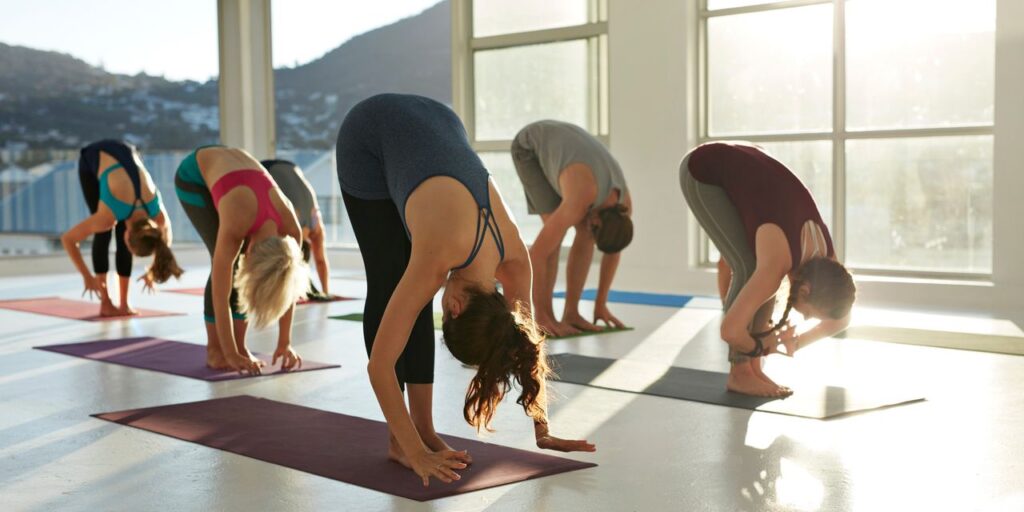What to do instead: Prioritize what feels good to move in (and maybe give any new apparel a test run to make sure you’re able to fully stretch out in it before you get to class). “You don’t have to buy the super expensive pants,” Cheung says. “Just make sure you’re dressing to feel comfortable.” Or as Alexandra puts it, “Wear whatever makes you feel good in your body.”
If hygiene concerns make you nervous about going barefoot, consider bringing your own mat or wiping down one you borrow from the studio before you start, Cheung recommends. Or consider grippy socks that will give you more traction—some even allow your toes to poke out.
5. You ignore breath cues.
There’s a lot to think about in a yoga class. So it’s easy to let the breath fall by the wayside and ignore the teacher’s cues about inhales and exhales, especially when a flow gets challenging. But, Hirsch says, “When it gets really intense, that’s when you need [it] to keep going.” If you can learn how to breathe through harder poses in yoga, she says, you can better prepare for stressful situations in life, where harnessing your breath could help calm your nervous system.
Plus, holding your breath only ends up making things extra hard. “Our breathing mechanics can really set the stage for how we feel in our bodies and in our brains,” Cheung says.
What to do instead: If you notice you’ve lost control of your breath, Cheung suggests taking a beat. Try a gentler modification or go into child’s pose until you’re able to regulate your breathing.
You can also set proper breathing as your intention for class. “That will keep it top of mind,” Hirsch says. “And when your brain starts to wander, you come back to your intention and your focus on your breath.”
6. You avoid props or modifications.
It’s too easy to fall into the trap of thinking of props and modifications as crutches. But the reality is that these tools can actually make your flow far more powerful. “The prop is there to help enhance the asana so that you can progress to a deeper version of it,” Salvatore says. Hirsch, for instance, says she uses blocks to deepen her lunges. Other times she’ll choose to do a twist from her knees rather than a lunge so she doesn’t overstress her muscles before or after a big strength-training day.
Cheung points out that if your ego keeps you from taking advantage of props or variations, you can hurt yourself. It can also sabotage your practice. ”We get so lost in the physical challenge, it can interrupt our connection with the breath and our mind and our body and our spirit,” Cheung says.
What to do instead: Ask yourself what’s going to give you the most effective version of the pose that day. And remember that taking a different variation is just another option, Hirsch says. “It doesn’t mean that it’s less hard or less good or less challenging.” Maybe one day you feel strong and powerful by fully extending your torso in upward dog, while the next you want to zero in on the biceps and triceps challenge of cobra pose. “Acknowledge the changes, the ebbs and flows of our bodies,” Alexandra says. This is what makes yoga sustainable as a long-term practice throughout our lives.
7. You go rogue with your poses.
Yes, many poses are meant to be scaled up or down. But when you pull out a fancy upside-down inversion or arm balance that’s wildly disconnected from what the rest of the class is doing, you’re disrespecting the teacher’s intentions, and could distract students around you. “That really bothers me as a teacher when it feels less about adapting the practice for you and more about, How can I show off this handstand in the middle of class?” Cheung says. Result: It can seriously disrupt the energy of the room.


